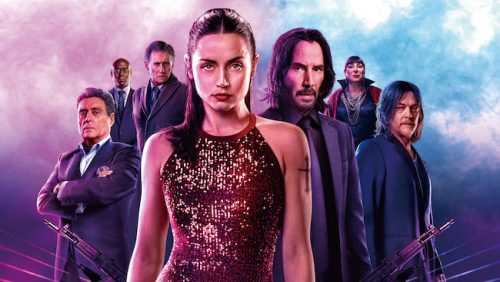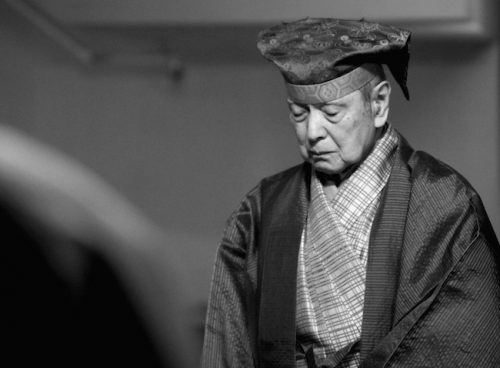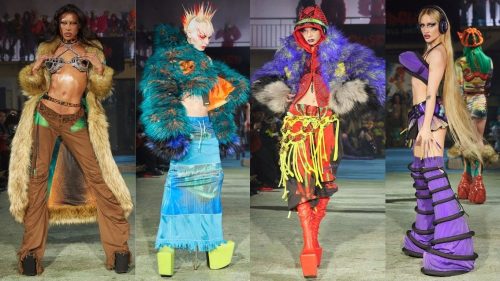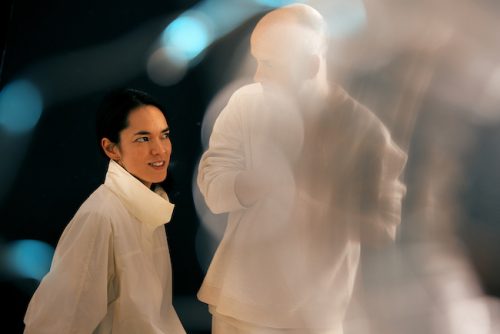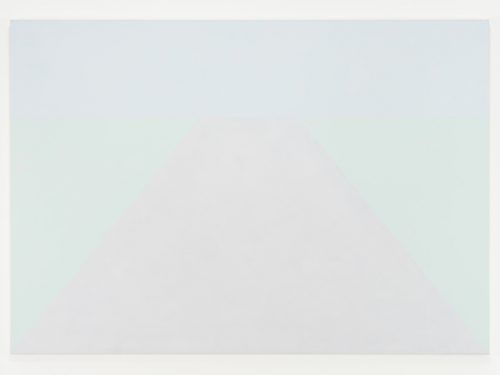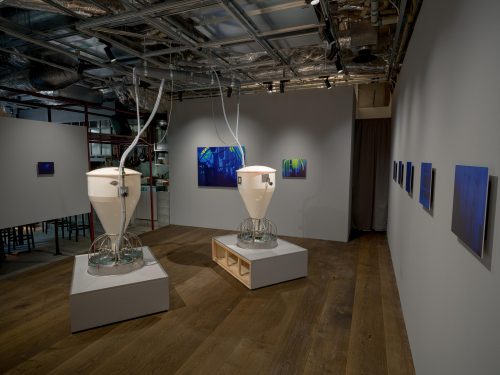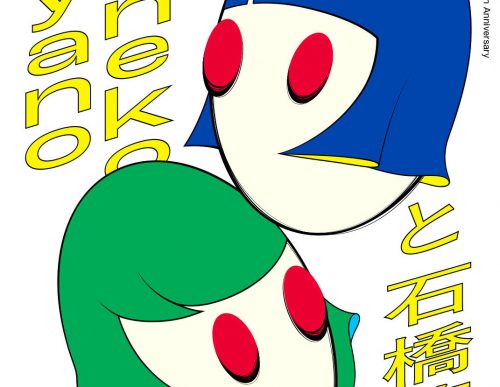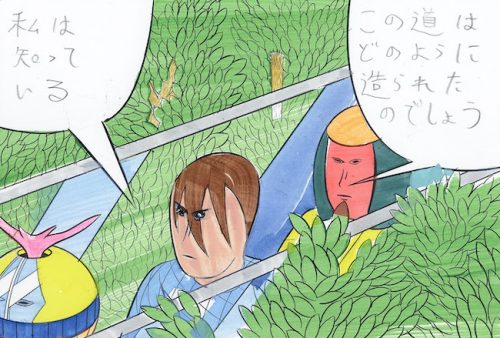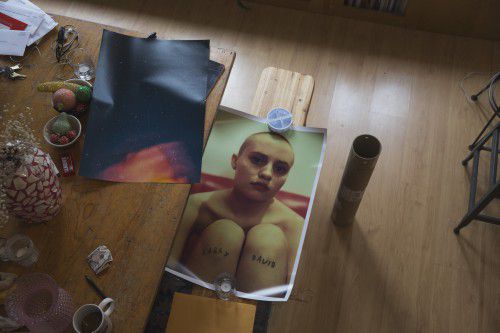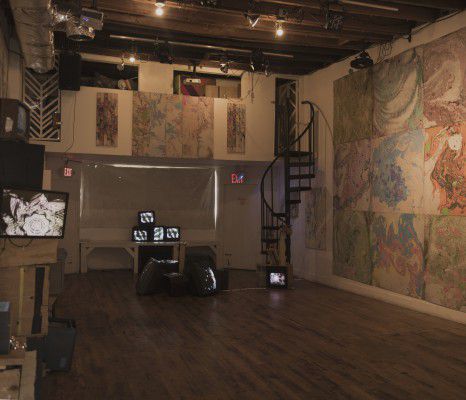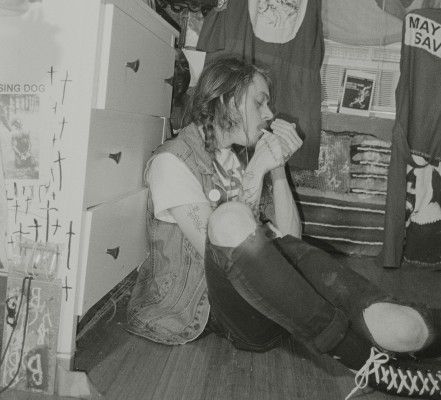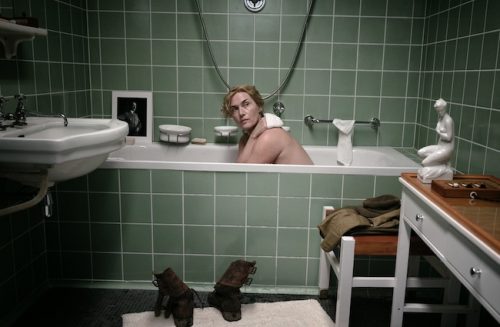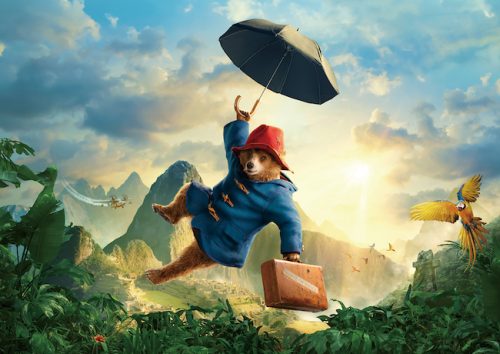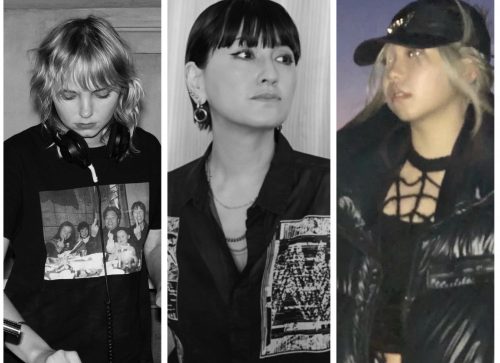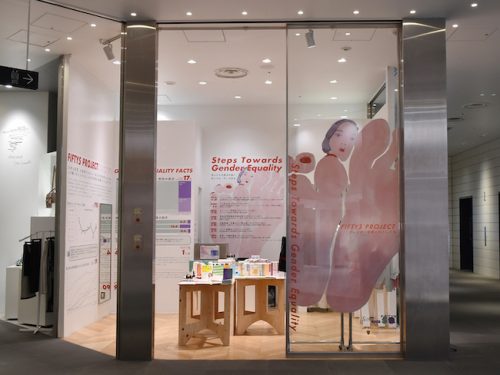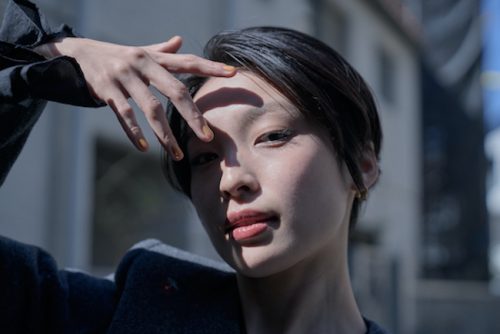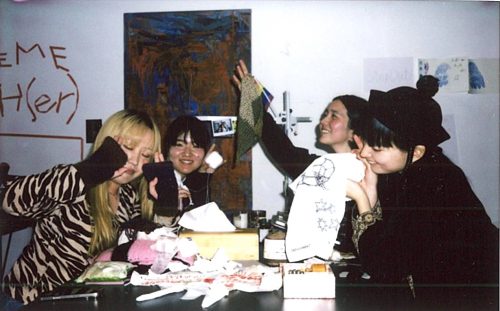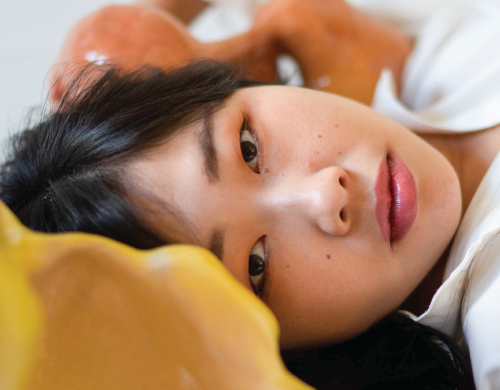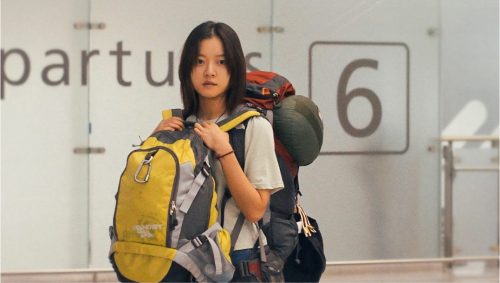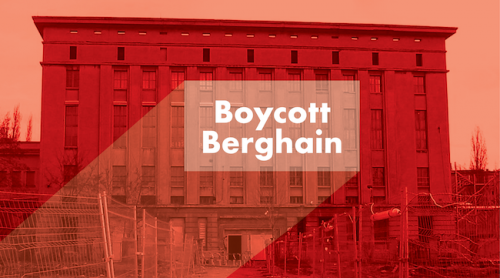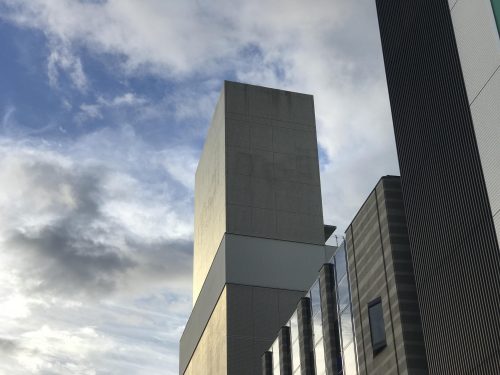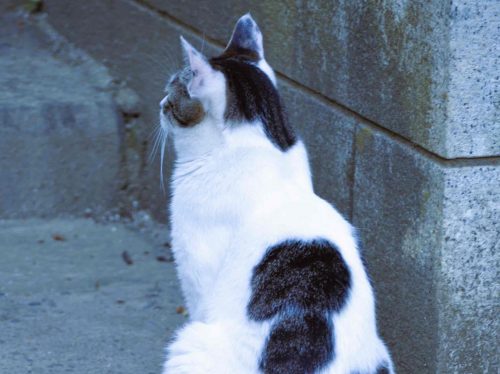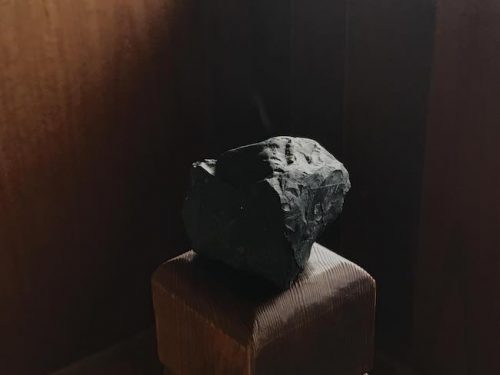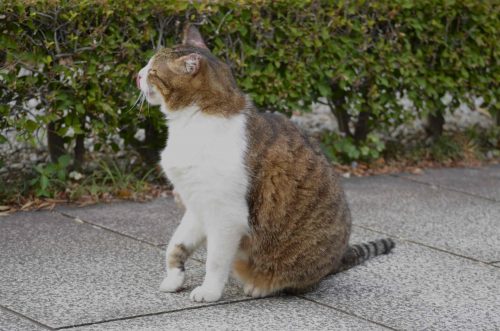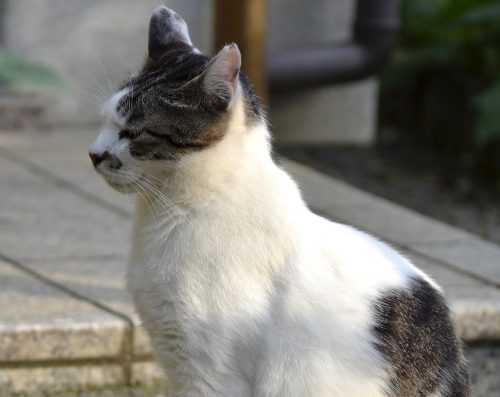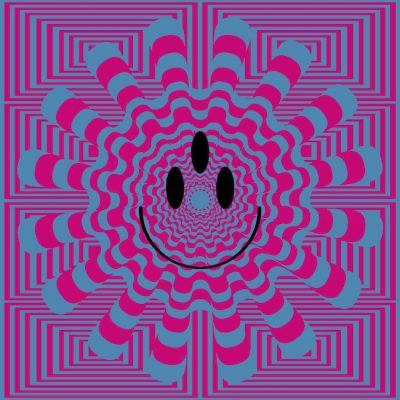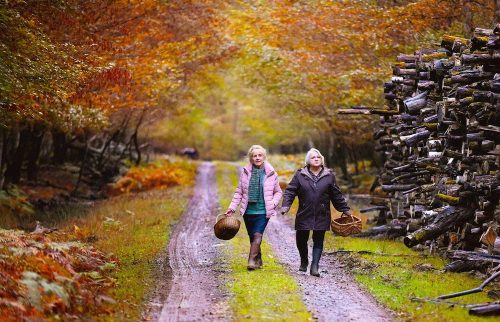Scott McFarnon Crazy Heart from Igor Kropotov on Vimeo.
北極など世界各地を飛び回ってドキュメンタリーを撮る一方、ファッションなどのコマーシャルワーク、さらにヨーロッパのシネマに影響されたアート作品も発表するIgor Kropotov。シネマとグラファーとはどんな仕事なのか、また数多くの仕事とアートとのバランスをどのようにとっているのか、創作の源流は——スケートボードから始まった彼の冒険とクリエイティヴについて。
——まず自己紹介をお願いできますか。
Igor「シベリアのノヴォクズネツクという小さな町で生まれました。祖父母を含めて家族のほとんどがその町の出身で、今も叔父や叔母、従兄弟が住んでいます。そこからベルギーのブリュッセルに引っ越して、インターナショナルスクールに通いました。4年間ベルギーに住んだ後、ロシアに戻ってモスクワで思春期を過ごしたんですが、モスクワでも英語で教育を受け続けたから、英語圏の大学を受験することができました。親の意向もあって、長い間ビジネスを勉強するつもりだったけど、いろいろあってフィルムもやりたくなって、一校だけお試し受験することにして、どうせ受けるなら世界最高峰の学校にしようと思ってNYUのフィルムスクールにしたんです。本当にギリギリに決めたし、進路指導の先生にもフィルムのスクールは薦められませんでした。でも受かったら絶対に行くと決めていて、見事合格しというわけです。アメリカには一度も行ったことがなくて、80年代や90年代の映画でのNYのイメージが強かったのですが、クイーンズに着いて、タイムズスクエアのホテルにタクシーで向かったんだけど、クイーンズで窓から外を見ても低い建物ばかりだったから『あれ、なんか映画とは違うな』と思って。でもミッドタウントンネルを通って、マンハッタンを見た瞬間! あれは今でも鮮明に覚えています。建物があまりにも高いからタクシーの窓から外を見あげようとしたんですよ。タイムズスクエアに着いたら人混みがすごくてNYらしいと思ってワクワクしたし、早速その夜にNYの友達に会いに行って、とても楽しかったな。それから10年間くらいブルックリンに住んでいます」
——あなたがやっているシネマトグラフィーとはどういう仕事なんでしょうか。
Igor「シネマトグラフィーは、台本のイメージに合わせたビデオを作る作業で、大まかに三部分に分けられます。
一つ目は、マネージャー的な役割で、カメラ、エレクトリック、グリップの部門の担当。その部門ごとにもヘッドがいます。通常の撮影だと15〜40人くらいをマネージングしていて、大きな現場だともう少し増えます。カメラの部門は、第一カメラマンと第二カメラマンと道具を管理する人たち。カメラの位置や、使うレンズを伝えます。エレクトリックの部門では、電気や照明を担当していて、この部門の仕事が一番クリエイティヴだと思う。どういう照明をどこに当てるかを伝えるんです。グリップとの仕事もわりとクリエイティヴで、現場を作ってくれる役割があります。照明の位置調整をしたり、高い所から見下ろした動画を撮りたい時に、安全なクレーンを作ってくれたり。マネージャーは3つの部門のヘッドと話しながら仕切ります。
二つ目はテクニカルな仕事で、技術が必要。理想のイメージを作り上げるために、どんな照明やレンズが必要か、どの技術を使ったらどう見えるかなどの細かい知識が必要とされます。
そして最も大事なのがクリエイティヴの仕事。クリエイティヴ側の人が台本のセリフから動画のイメージを作り上げないと、マネージャーもテクニシャンも仕事できないので、全ての元となるし、一番楽しい部分ですね。
この3つは、簡潔に言うとディレクターと一緒に台本からムービーを作るということ。ムービーは音とイメージでできているけど、その50%をシネマトグラファーは担当するので重大な責任があります。僕の大好きな仕事です」
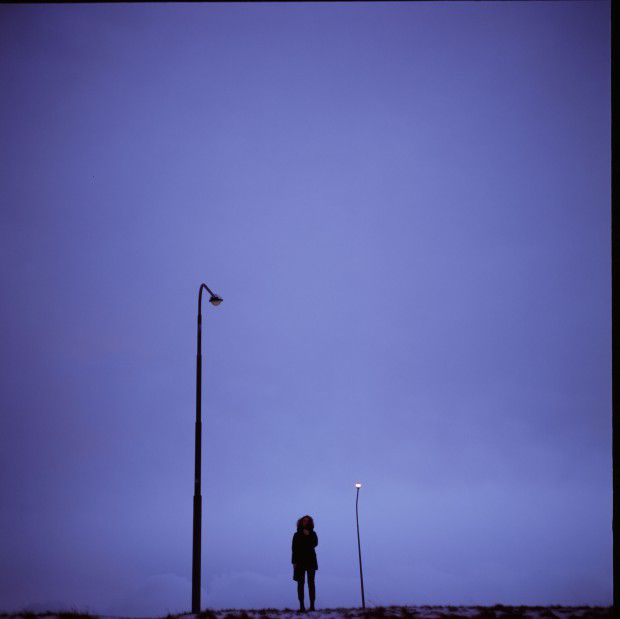
——どのようにしてその仕事を始めたんですか。
Igor「大学の講義が正式に始まった時からすでにシネマトグラファーになったと認識しています。でも、シネマトグラフィーという仕事を発見したのはティーンの頃で、13歳の時に友達とスケートボードを始めて毎日やってたんです。16歳の時に骨折してしまって、4ヶ月くらい乗れなかった時期があって、それでもスケートボードに関わりたかったから、滑っている友達を撮影し始めて。スケートボードを撮影する時は、大抵魚眼レンズを使って、動きを追うか全体を撮るかなんです。たまにワイドアングルなしで、ズームもしますけどね。スケートボードの撮影以外にも、休憩中に友達の写真を撮ったりもしていて、その時にイメージを通してストーリーを伝えることが好きなことに気づきました。イメージを作るのが好きだし、自分らしい動画が作れるんです。役者も関わるディレクターとは違いますし、誰が担当したかによって全然違う味が出るからとても面白い。舞台要素にはあまり興味がないから、アイデアを動画で捉えるんです。大きな責任を任されるのが好きだからこの道を選んだんでしょうね」
——インスピレーションはどこから?
Igor「最初はスケートボードビデオの影響が強かったと思います。特にアメリカのね。当時はクリエイティヴというものをちゃんとは理解していなくて、他のビデオで観たものを再現しようとしていました。Fred Mortagneは、Cliche Skateboardsというフランスのスケートボードブランドの撮影をやっていて、素晴らしい写真を撮るんです。Joe MinerがEmericaという靴のブランドのために撮った動画も最高です。
そのうち動きだけじゃなく、感情なども撮りたいと思い始めて、スケートボードの動画を観る時も、技より現場の裏のをおもしろく感じたりしだして。
でもやはりシネマトグラフィーは、台本から想像することが一番大事ですね。そこから最初のインスピレーションが出てくる。他にはヨーロッパのフィルムやVimeoの動画からもインスパイアされます。VimeoはYouTubeよりクリエイティヴでアート要素が強い動画が多いから好きなんです。光やコントラストの使い方はヨーロッパのフィルムの影響が強いかな」
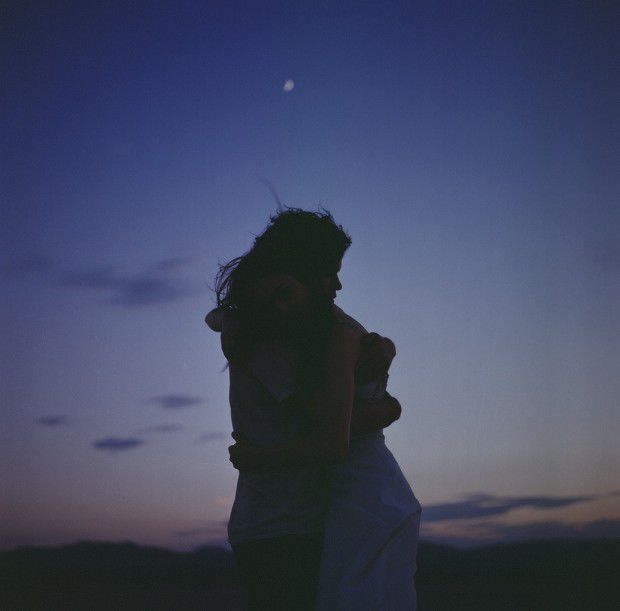
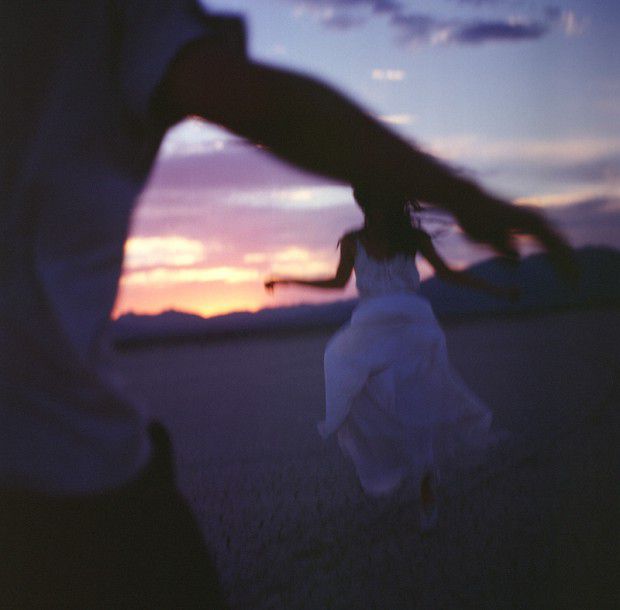
——Scott McFarnonのMVはどのように作ったんでしょう。
Igor「なるべく現実的な作品を作ろうとしました。彼女の視点からの世界を表現したかったんです。Lomoというソヴィエトで作られたヴィンテージなアナモルフィック・レンズを使用しました。不思議な色合いとがハイコントラストと合わさって、ちょっとラフな見た目になるんです。照明はあまり使用しないで、もう少し自然な光やカメラの動きを使って、現実感を出しました」
——コマーシャルからドキュメンタリーにまで跨って作品を作っていますが、その中でどのようにして自分らしさを出しているのでしょうか。
Igor「フィルムやコマーシャルは自分でコントロールできるし、色々準備できる時間もあります。完璧にできるまで何度も撮り続けられますしね。ドキュメンタリーみたいな感じを求められる時もあるから、境界線が少し分かりにくくなる時もありますが。ドキュメンタリーは、ストーリーの設定とオーディエンスにどう内容を伝えるかが大事で、フィジカルやボディランゲージに注目して、次の行動に備える必要があるんです。毎回そうではないけれど、自分と撮影される側が一緒にダンスしている感じ。ストーリー性があるドキュメンタリーが一番いい作品だと思います。Yung Changの”Up the Yangtze”という作品はそういう意味では突出した作品ですね。自分の作品の良さは撮影の際の被写体とのそうしたダンスの上手さから来ていると思います」
—アート作品ではどんなものを作っているか教えてください。
Igor「コマーシャルじゃないものやメインストリームではない作品を作るのは好きです。今は人が無意識で隙のある状態を写真で撮りたいと思っています。大都市に住んでいる人は周りの目を気にしてばかりで、素を出せていない。本当は人柄の方が大事なのにね。そういうところを作品で伝えたくて、人がクシャミしている写真を撮っているんですよ(笑)。クシャミってみんながすることだけど、手で隠したりしますよね。美しくないと思っているんだろうけど、だからこそ隠さずにクシャミをしている人の写真を撮りたくて。
シネマトグラフィーに関しては、短いサイレントドキュメンタリーで、ヴィジュアルでストーリーを伝えるようなノンコマーシャルな作品もあります。
写真はシネマトグラフィーに似ているけど、写真の方が完璧な瞬間を掴むチャンスが少ないから難しいと感じています。もう少し時間をかけて感情やムードを表現できるから、僕にはシネマトグラフィーの方が少し楽かも。写真を見た時に、『すごい!』と思う瞬間があるけど、シネマトグラフィーは数秒間それが続くんです。
でもずっと画面やカメラを通して世の中を見ていると、美しいものを見逃してしまう。一時期、写真が仕事に感じて普通に生活ができなかった気がしたから、しばらくは私生活でカメラを手放したんです。そこからはよりコンセプチュアルなものを撮ろうと思ってやっているところです」
——NYにおけるコマーシャルとアートのシーンについてどう考えていますか?
Igor「定義するのは難しいけれど、全くクロスしないということでもないんです。デジタルマガジンのNownessはメインストリームとアートが結びついたものだからとても楽しい仕事ですし、多くのファッションのフィルムでもそのようにして作られていると思います。高次元のコンセプトを短いフィルムに詰め込んでいて、服の広告であると同時にメタファーのよう。そのような需要があるからNYに住んでいるとも言えますね。西海岸だともう少しエンターテインメントの要素が強くなってしまうから」
——両方のバランスをどのようにとっているのでしょう。
Igor「どちらも楽しんでいますが、バランスととるのは時に難しいです。ドキュメンタリーのためなら世界の果てまで行きますし、つい最近も北極で8日間かけてドキュメンタリーの撮影をしました。でもNYでのコマーシャルワークも滅多に断りません。ドキュメンタリーは未知の地、未知の出来事を経験できるので、シネマグラファーとして成長でき、そこでの経験はアドバタイジングにも応用できるのです。
僕はヨーローッパのフィルムが好きなのですが、あちらではアート性を大切にして作られていると思います。アートフィルムは大きなマーケットはありませんが、個人的なプロジェクトにはその影響が大きいかな。バランスをとるのは本当に難しいですよね。自分ですら、たまには刺激のあるものではなく、何も考えずに楽しく馬鹿げたものを観たいと思いますから。最高のフィルムはヨーロッパで生まれていると思いますが、その中でも僕のシネマトグラファーとしての人生を変えたのはYorgos Lanthimosの『籠の中の乙女』です。その次の作品である『ロブスター』も同様で、アートをメインストリームに落とし込むにはどうしたらいいかを学ぶことができる素晴らしい作品。ヨーロッパではアートがメインストリームとして存在しているから、エンタメとアートが両立できるんでしょうね。
最近Darren Aronofskyの『Mother!』というフィルムを観たんです。シンボルが多いから苦手な人も多いし、何か理解できないことがあると、それについて考えて話さずにすぐ無視しちゃう人もいますけど、人に何かを考えさせることができたら、その映画は大成功だと思いますよ」
——映像での影の使い方とても印象的でした。白の使い方はロシアを思い起こさせましたが、バックグラウンドやアイデンティティは作品に反映されていますか。
Igor「いろんな作品を作るけど、やはりどちらかというと暗い作品が多いと思います。ちょっと変わったアートっぽい作品。そこから名作は生まれると思うんです。与えられたマテリアルを使って、理想を上回る作品を作ることを大事にしたい。ファンタシーより現実的な話が好きなのはロシア人っぽいなと思います。だから、ロシアのシネマが大好きなんです。完璧すぎるハッピーエンドがあって、観た人にもっといい生活を想像させる映画が多いけど、ロシアのシネマはその逆のことするから今の生活に感謝することになります(笑)。あと、コントラストや暗いイメージが好きなんです。よく分からないけど、ロシア人の友達もみんなダークな作品が好きで。今はドストエフスキーの『白痴』という作品を読んでいるんだけど、暗くてちょっと鬱な気分になるけど、やっぱり大好きなんですよね」
True North Trailer from Igor Kropotov on Vimeo.
——あなたが一番美しいと思う写真やフィルムは?
Igor「今最も美しい作品はヨーロッパで作られていると思います。常識を無視したような作品。Yorgos Lanthimos監督とシネマトグラファーのThimios Bakatakisが作ったDogtoothは斬新だったと思うし、すごく影響受けました。カメラはあまり動かないし、コンポジションも不思議だけど、話に合ってるんです。写真では、Jason Eskenaziの『Wonderland: A Fairy Tale of the Soviet Monolith』という本。彼はブルックリンを拠点にしているんだけど、90年代のソヴィエトを回って写真を撮っていて。崩壊してしまった国や人々のストーリーやアイデンティティについての作品なんです。そういう視点の写真に惹かれるし、その写真が撮られた瞬間を想像させられます。
常識を無視した作品に惹かれるんです。80sや90sの作品は今とは全然違いますよね。現実的な作品が好きなので、ワイルドの作品も楽しいし、ヴィジュアル的にも面白いけど、やはり現実感が足りないことが多くて。職業病だけど、窓から光が入ってきているシーンを見ると、どのように光を当てたかとか分かってしまうんです。だから自然な環境を完全に無視せずに、少し良くしたくらいの作品がいいなと思います」
——どんな人や企業と仕事してみたいですか?
Igor「A24という会社ですね。シネマ界を変革していっているし、アートとエンタメを上手くミックスしていると思います。大好きなフィルムメーカーはAndrea Arnold。『Fish Tank』『American Honey』『Wuthering Heights』の構成やムードや照明のセンスは完璧です」
——普段はどんなメディアをチェックします?
Igor「いろんなジャンルの写真集をたくさん。Strand Bookstoreに行って、立ち読みしますね。Vimeoはクリエイティブなショートフィルムが多いし、そこから静止画をとっていたり。『ICG』という雑誌もチェックしています。シネマトグラフィーは孤立しているし、みんな秘密や才能を隠そうとするんだけど、ICGはそこに入っていって情報を取り上げているんです」
——好きなCMは?
Igor「GeicoのCM。いろんな宣伝方法を利用しているんです。マスコットのトカゲは苦手だけど、他の作品は最高。宣伝方法を研究していて、ぶっ飛んだこともするんです。CMが始まる前に終わらせちゃって、ロゴだけ出したりね。クルマ保険を売っているだけど、ユーモアで溢れていますよ」
——好きなYouTubeチャンネルは?
Igor「YouTubeは観ないんです」
——どんなところから情報を得ていますか?
Igor「友達から情報を知ることもあるけど、やはりネットが多いかな。Vimeoの存在は大きいです。あとはシネマに行って、大きい画面とでかいスピーカーで鑑賞するオーソドックスな方法が好きかな。パソコンの画面とは全然違うと思います」
——5年後は何をしていると思いますか。
Igor「シネマトグラフィーを続けていると思います。長編は特に自分らしさを出せるので、もっと大きくて素晴らしい作品を作りたいですね。ディレクターとコンセプトを考えて、一緒に絵を描くみたいな感じがすごく好きです。最近は自分で私的にコンセプチャルなフィルムや写真もやっていて。環境についてのフィルムを作って、南極やネパールや北極にも行けたんです。時間がある時には登山するし、いつか七つの頂点を登りたい。冒険を作品に取り入れようとしているんです」
——素敵ですね。他に何か最新のニュースはありますか?
今度『Welcome to Mercy』というラトビアで撮影した新作が出ます。あと、『Truth North』という作品をPBSで作りました。それで8日間北極に行ったんです。ずっとマイナス30℃ぐらいでの撮影でした。Sean Swarnerという2回ガンになった男性がガン啓発活動をしていて、彼は世界中の山頂に登って南極と北極にも行ったんだけど、それを制覇することをexplorer’s grand slamっていうんですよ。このドキュメンタリーは最後に北極に行くのを撮影したものです。1月に全米公開予定です。北極では南谷真鈴という日本人の女性にも会いましたよ。彼女は日本人最年少でexplorer’s grand slamを完成した20歳くらいの女性です」
Igor Kropotov
http://igorkropotov.com
https://www.instagram.com/igorkropotov/
Mad Honey from Igor Kropotov on Vimeo.
——ーCan you tell us about yourself?
I was born in a small city in Siberia, Russia called Novokuznetsk. People would argue that it’s not a “small” city with half a million people, but it certainly feels like that whenever I go back to visit. Most of my extended family is from there. My grandmothers and grandfathers are from there, and my uncles and aunts and cousins still live there. My family moved to Brussels in Belgium where I went to the international School of Brussels and when we returned to Russia after four years of living there we settled in the capital city of Moscow where I spent most of my formative years as a teenager. I continued to attend an English speaking school which gave me an opportunity to attend University abroad. Although for a while I thought that I would become a manager of some business and highly considered that as a career choice because my family kind wanted me to do that, a last minute spontaneous decision got me admitted into one of America’s best universities for film. When I was accepted to New York University’s – Tisch School of the Arts, I could not pass up this opportunity and decided to go, even though have actually never been to America before in my life. But imagine NY in the 90s and the 80s in the movies. We see one thing, and then you come here thinking it’s going to be like the movies, but it was completely different. The first time that we landed in Queens, we took a taxi to a hotel my family booked in Times Square. We drove past smaller buildings in Queens and I was thinking to myself, “This is not the NYC I saw in movies.” Then, I got into Manhattan through the Midtown Tunnel and I remember looking out of the taxi window and trying to look up because the buildings were so tall. Then, we went into Times Square, and I thought there were so many people and I was like, “This is it. This is what all of NY is like,” and I was very very excited about it. I already had some friends here, so went that night to go see them. It was an exciting time in my life. I have been living in Brooklyn, New York ever since then. I’ve been here for about 10 years now.
——Can you tell us what is Cinematography?
Cinematography is essentially the craft of making images from the script, or interpreting the script with the director and making images that tell the story in the appropriate way. Although I think there are three parts to a cinematographer that most people are not aware of in terms of the full scope of responsibilities that the job requires.
Managerial – With a title like “Director of Photography” you are essentially responsible for all elements that fall into that position. You are the head of three departments, Camera, Electric and Grip. Each of those departments also had a head of that department. On a normal shoot, you are managing anywhere between 15 to 40 people, sometimes even more on larger sets. You have to give direction to the camera department, which consists of the first assistant camera, second assistant camera, and the people that work with the equipment. You tell them where the camera goes and what lens to put on. And then there’s the electric department, which does the all the electricity and sets the lights. I think working with them is perhaps the most creative relationship you have. You instruct where to place lighting and what kind of lighting to use. Grip is also very creative and they basically construct things for you, like how to shape the lighting. If you want a shot from up above looking down, they have to make some sort of metal structure that I can climb on safely. It’s a collaborative and creative process that I enjoy with those departments, but you are essentially overseeing it all. So that’s the managerial part, you have manage all of these three departments because you are essentially talking to these three different people that are also the heads of their departments.
The technical comes from knowing the so called “tools of the trade”. When you come up with a visual idea with the director, you have to know the tools for the possibilities or sometimes work with your team to create something new. Knowing the types of lights, lenses and support to use to tell the story. You have to know all what it’s going to look like, how to do certain things, which equipment you need to make something work, and how to achieve the creative results that you need.
The most important is of course creative, where it all stems from. I think the creative part is the part that I’m most excited about most of the time. Working together from the written word and creating images and covering scenes is where it all starts. Creating a look for the film, the camera movement, the lighting, the colors – the technical and managerial follows the creative.
So there’s really three parts to it, but essentially, you work closely with the director to make the written word of a script have the right feeling to it, with the right lighting and right camera movements because there’s two parts to filmーits sound and imageー, and you’re literally 50% of that. It’s a big undertaking, but I always enjoy that.
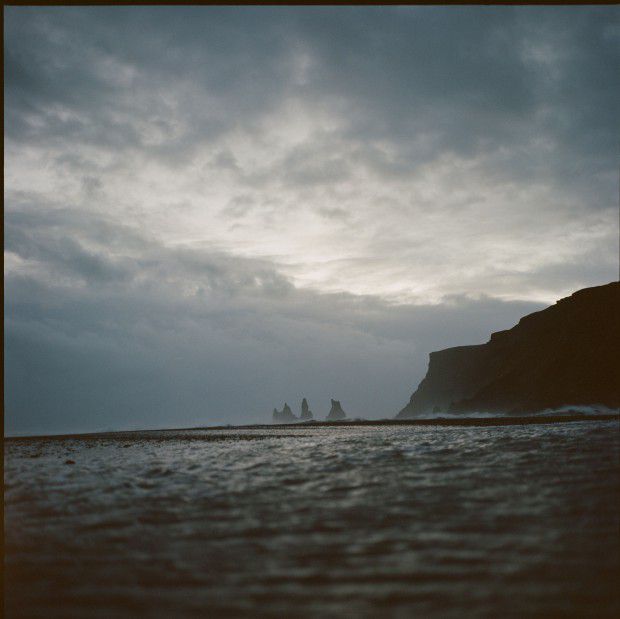
——What year and How did you start?
I truly started being a Director of Photography with my first lecture at the University, when I started learning about filmmaking. My discovery of cinematography however came from my teenage years of skateboarding. I first tried skateboarding when I was about 13 years old, a friend of mine called me up and said that it’s the new cool thing to do – and of course as a teenage trying to follow some sort of trend and be accepted landed me on skateboard. Little did I know how much it would actually consume my life and not only become a weekend activity but a daily obsession. When I was sixteen I broke my leg at the skate park. It was a serious injury that that had me in the hospital for 3 weeks and also on crutches for more than 4 months. I wanted to keep skateboarding with my friends but couldn’t do the same things I did before, so I picked up a camera and started filming them and made my first video around that same time. Filming skateboarding is pretty formulaic, one camera with usually a fish eye, following the action or being stationary, sometimes you’d do a zoom without the wide angle. I paired filming with behind the scenes photography of my friends, hanging out or between sessions. I think it was at that moment that I truly found the creative side of composition and storytelling through imagery.
I think that I really enjoy creating images and I think that because it’s still cinema at the end of the day, and I think that images that you create as a director of photography are more true in a sense. It’s not the same as directing, where you work with actors and you work with other departments in the same way. But, I think the creativity that they bring is also very unique because I always how a different film would be if there were a different director of photography. So, I think I chose it because it’s a lot of responsibility and I enjoy being responsible for the various departments. I think acting is a different sort of sphere that I don’t really enjoy and I like the technical, managerial and creative elements of photography, but not much the theatrical elements.. You let somebody else work with the theatrical element of it, and I like the idea of capturing it on film or digital format or whatever you choose to work with.
——What was your inspiration?
At that time, my inspiration came from other skateboarding videos, mainly American ones. I don’t think that I was versed enough at that time to understand pure creativity. Most of the time we tried to re-create what we have seen done previously in other skateboarding films, the work of Fred Mortagne who used to be a filmmaker for a French company called Cliché Skateboards and takes incredible photographs, as well as Jon Miner and his work for Emerica shoe company.
I thought that there was more to filmmaking than skateboarding, and wanted to capture feelings rather than just pure action. I think that watching skateboarding videos I always enjoyed more the behind the scenes of the skaters than the profiles sometimes, that is why I wanted to learn more.
But, for cinematography, it primarily has to be inspired from the script and if you read the script, then you have really ideas of visuals. That’s where the initial inspiration comes from. Otherwise, everybody needs a point of reference. I watch a lot of European films that I use as reference and Vimeo is a great point of reference. Vimeo really releases a lot of creative artistic work, more so than YouTube most of the time, so it’s a great resource. Yeah, predominantly European films for lighting and contrast and things like that.
—— I love Scott McFarnon’s music video. Can you tell us about it?
The concept was to make it feel as realistic as possible and try to portray the visuals from the perspective of the main character. To see the world from her eyes. We used vintage anamorphic lenses called Lomo that were made in the Soviet Union. They have a weird color rendition and chromatic aberration along with high contrast that also gave it a dirtier look. We used very little film lighting on that and instead used practical lighting and camera movement to breathe life into the video.
—— Your work ranges from commercials to documentaries. I think that what is demanded in each genre is pretty different. How do you adapt to their distinct needs and also incorporate your own ideas?
Film and commercials you have absolute control over, you can plan things ahead of time and make adjustments as you go. I greatly enjoy the fact that you can shoot the same thing over and over again until you get it just right. Although sometimes commercials and narrative films call for a dirtier more documentary organic look so there is occasionally a blurring of borders that happens, mostly you are just working with a different camera that has a particular look. Documentary for me is mainly exposition, you deliver information from the subject to the audience and have to be aware of their physical presence and body language to anticipate what will happen next. In a sense it’s a dance between you and the person you are filming, but doesn’t always have to be like that. The best documentary films are ones that look like they were made as narrative pieces, one piece particularly stands out by Yung Chang called Up the Yangtze. This dance between subject and camera in documentary is I think where most of my strength in handheld narrative work comes from.
——Do you make non-commercial art as well? What are those works like?
I do like making non-commercial work, or non-mainstream work. I’m actually working on a new project right now and I’m trying to blend a few different things. I love photography because it’s so similar to cinematography, but I actually think photography’s much harder because if you have 24 frames a second to capture somebody, you only have one frame and it has to be at the exact right second to capture somebody in their moment of vulnerability or a genuine moment. So I think in that sense, cinematography is a little bit easier. You can portray a mood or a feeling in a longer span of time than photography. When you look at a certain photo and it makes you feel something, you’re like “Holy shit this is great!,” but with cinematography, you can watch a couple seconds of it. With the one photography project I’m working on currently, I’m trying to take pictures of people in mid-sneeze and it’s about moments of vulnerability. I think especially living in a large city, too many people are very much preoccupied with who they come off as on social media or on their resume than who they really are. What I’m excited about with this project is that sneezing is something that everyone does and everyone tries to make it a very private thing where they turn away, but I think that even photographing the most beautiful people in that sort of moment without hands, just exploding onto the camera, is something that I’m excited about. And I think that it’s hard to balance both because I think, at a certain moment, when there’s lot of work coming in, you get so used to seeing life through a viewfinder or a screen that you become completely disconnected and the most beautiful things might be unfolding in front of you, but you never get to experience them because you’re always cautious of what the camera is doing. There was a period of time when I stopped taking photos for like a year because it felt like work and so in my time off, I was trying to live life and experience life normally. If I had to hold a viewfinder to my face and look for an interesting composition and gauge lighting, it felt like too much work. So I sort of gave it up and thought that I should live life like a normal person for a little bit. But, you know, I’m trying to do more conceptual art and stuff like that.
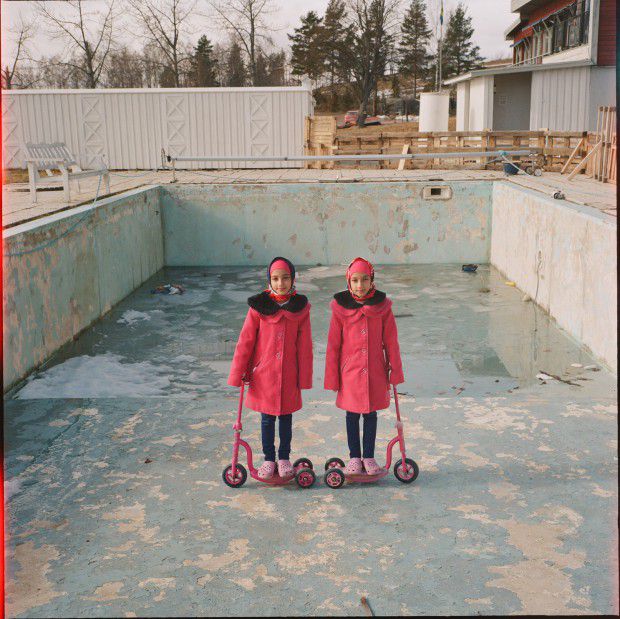
——How would you describe the commercial and art scenes in NYC? What are some similarities and differences?
It’s a hard definition really, they don’t really cross paths all that often. I really enjoy the work that the website Nowness puts out, because its a combination of mainstream and art. A lot of the work that I see combining both in a creative way is made though fashion films. They are high concept short narratives, that examine a statement of a metaphor while at the same times subtly advertising the clothing. Part of the reason that I enjoy living in New York is because there is still a demand for that, the merge of art and commercial, whereas I see the west coast as being more entertainment oriented.
—— How do you find and maintain a balance?
I enjoy both, and sometimes it’s very hard to balance. It’s hard to say no to travel when a documentary takes you to the ends of the world. It really is a privilege and an opportunity that I cherish and value. Most recently, I got to film an eight day expedition to the North Pole, carrying my documentary camera package in my sled in -40C temperatures. I merely could not give up this once in a lifetime opportunity for a bank commercial in New York.
Documentaries allow you to be in places that you would never have been and experience things in a particular way that makes you a better-rounded cinematographer. Nowadays, a lot of advertising work along with feature work is a good combination for me.
There’s a lot of work that comes out that’s very much mainstream and sort of mindless. I really like a lot of the European films and a lot of the work that is created in Europe because they’re much more art-oriented. There’s even a big difference between living in NY and LA. There’s a difference between entertainment and cinema. And art films don’t have a really big marketplace most of the time, and some of the more personal projects that I do are not all very well-received in that sense. It’s a tough balance to have and it depends on who your audience is. Sometimes, even for myself, if I’m just feeling like I wanna turn my brain off, I’ll watch something really funny and silly and not very stimulating. But if I want to think of something, I’ll read a book or watch something a little more creative. I think some of the best work is definitely coming from Europe. There’s this film called Dogtooth and that was the first film that director Yorgos Lanthimos did. It’s a Greek film and it was some life-changing cinematography for me. It worked so perfectly with the film narrative because the camera never moved and you’d have certain scenes where people’s heads would be falling and it made me think about body movement and interactions and things like that. I consider that to be an art film, and then, there’s a certain level where you have to sell out and become more commercially oriented. And his next film was The Lobster. It tries to fall into the same mindspace that he created with Dogtooth and is still very weird and unique, but at the same time, it’s much more commercially valuable. So, there’s a big balance in how you bring art into mainstream and I think that’s the big question in the US because people are not very accepting of that, but I think Europeans are. So art can be mainstream there, but here, it can’t. It’s either entertainment or it’s art. It’s difficult to balance.
The most recent film I saw was Mother! by Darren Aronofsky and a lot of people were put off by the metaphors and symbolism in it. When people don’t understand something, they very quickly and easily jump to conclusions by saying that it’s not part of the film, instead of having a conversation about what it actually means. If something makes you feel or think, at a certain point, then you’ve sort of succeeded in that film. If you’re thinking about it days after, then it was a successful film.
—— Your use of shadows in music videos stands out to me. The way you use white also reminds me of Russia, but do you think your background and identity are reflected in your pieces?
I think that while my work is diverse, I do like to sway towards darker films. Weird obscure and artistic work. I believe that is where true craftsmanship comes from. Being able to adjust to whatever material you are working with and making it better than one could have possibly conceived it. I do enjoy depressing and sad films over comedy, ones that make you see life for what it actually could be instead of a fantasy. Perhaps, that is very Russian of me. I very much enjoy Russian cinema and I think that a lot of Russian cinema is what I aspire to do as well. The cinematographers do more films that are essentially slices of life that are real and honest to how real situations are. I feel like a lot of the time, there are films that you watch and they’re better than life and too good to be real . You see the perfect relationship or like the perfect location in some magical place. That’s what’s so great about cinema as well, because it takes you out of reality and potentially your life, and takes you into a world that is better. But I think a lot of Russian cinema does the opposite. It takes you out of where you are, and puts you in a much darker place and gives you a certain perspective on how good you have it. So, I think that I really enjoy the contrast and dark images where we can barely see anything. Going into the white thing, I do like contrast and I also like the lack of contrast. It’s like the negative of that, if you have a white landscape with someone wearing black. That’s also contrast, so yeah. I don’t really know how to answer that question, but I think that all my Russian friends always joke about the fact that we like really dark stuff. I’m reading Dostoevsky’s The Idiot right now and it’s so dark that it’s kinda depressing, and I love it.
SEND from Peter Vack on Vimeo.
——What do you think are the most beautiful pieces of photography and film.?
I think the most beautiful work is what is being created in Europe now days. Films and art that push the boundaries of the norm. A good example of that is the film Dogtooth, by Yorgos Lanthimos and shot by the cinematographer Thimios Bakatakis. It’s a completely new take on cinematography and has been one of the most influential films for me in a very long time. The camera is stationary most of the time, the compositions are weird and unconventional, but work so well with the story. The way that he uses architectural lines to compose the images is nothing like I have seen before. With photography, my biggest influence is Jason Eskenazi’s book Wonderland: A Fairy Tale of the Soviet Monolith. He is a Brooklyn based photographer that spend the early 90s in various parts of the former Soviet Union photographing the demise of what used to be a great nation and revealing the truths of people’s hardships and struggles with their new identity as Russians. He mainly shoots on wide angle lenses with obscured foreground objects. That type of perspective brings you into the photograph, mainly because you sense the presence of the photographer at the moment it was taken.
Again, I think it’s the films that push the boundaries of what cinema’s supposed to look like. If you look at films from the 80s and 90s, they don’t look the same way that they do now. I think the ones that I enjoy the most are the ones that are more honest the ones where it doesn’t feel over-manipulated and you can like something crazy and it feels forced. It can be aesthetically pleasing, but at the same times, it’s not real. And there’s a reality factor to it and when it’s real, then you feel something. Like when there’s a row of windows and there’s shafts of lights coming in, you see the shafts of light because there’s also a hazer working in the room. I’m not against that, but people who work in the film industry, especially in cinematography, you instantly know it’s through this lense and they put lights through the windows and sometimes, it’s hard to watch films in that way because you know that something has been completely manipulated and it’s a fake environment. But if you can take an environment and make it just a little bit better where you can augment it in such a way and not fully transform it. That’s an obvious factor that’s real that I enjoy the most.
—— If there is any collaboration opportunity, who do you want to work with?
The company that I actively seek to collaborate with is A24. The films that they have been putting out have completely been re-inventing cinema in a different format. They are a perfect combination of art and entertainment. However, one of my favorite filmmakers is Andrea Arnold, and the way that her films are shot, Fish Tank, American Honey and Wuthering Heights is my perfect balance composition, mood and lighting.
——What kind of magazines and media do you check daily?
I try to look at as many photography books as possible, portraiture, landscape, everything. I’ll take time to go to Strand Bookstore, which has a massive collection and browse through it. Vimeo is a great resource for short form references of creative work, I pull a lot of still images from there. I will also read ICG magazine. I think that cinematography is so isolated in so many different ways, it such a craft that people keep a lot of their secrets and crew talent under wraps. ICG does a good job exposing that.
——What’s your favorite Commercial?
The company making my favorite commercials now is Geico. They advertise in a number of different ways, and even though I don’t love their mascot of the lizard but their other work is incredible. It plays on and mocks advertising in the most absurd way, like ending a commercial before it even began and simply putting their logo on it. There is captivating humor for everyone to enjoy, even if they are selling car insurance.
—— What’s your favorite Youtube?
I don’t really watch youtube channels.
—— How do you find the information usually?
A lot of the time my friends will share information with me – mainly the internet nowadays. People will talk about it, you should go watch this go see that. Vimeo is a huge part of my life for visual references. I like to go to the cinema frequently to experience a film the way that it was intended to be, on a big screen with massive speakers and not simply on your computer.
—— What do you think you will be doing in 5 years? Near future?
I’d continue doing more cinematography. In five years, I will continue to make larger and better advertising work and feature films. I really enjoy doing feature work because I think that feature work is really where you get to shine as a cinematographer because it’s a concept you come up with a director and it’s almost like a painting you’re both creating together that you paint with light and color and composition and that is the one piece that you have to offer. I really enjoy those because they’re true canvases for directors and photographers.
I have been swayed into directing more of my own art oriented work instead of seeking it out because essentially, unless you create it yourself, you will never find the perfect project. That includes conceptual film work as well as photography work. I have recently fallen into a niche market of extreme environment filming and have landed jobs that have taken me to Antarctica, Nepal and the North Pole. In my free time, I like to do mountaineering and the seven summits is on my to do list in this lifetime, and I actively search to combine adventure with work.
——Any news, or highlight you want us to note about? The latest News on your brand?
The latest film that is coming out soon is called Welcome to Mercy that I shot earlier this year in Latvia. as well as a feature documentary piece of PBS called True North that took me on an 8 day expedition to the North Pole coming out as a nation wide release (USA) in January. It’s essentially about this man named Sean Swarner who’s a two-time cancer survivor and he dedicated his life to raising awareness for cancer. He climbed all the seven summits around the world and trekked to the South and North Pole and the documentary covered the last piece of his journey. It’s called explorer’s grand slam when you do all seven and the two poles. So, I got to go on an expedition with him to go to the North Pole and it was very cool. We got to film the whole thing in like minus 30 celsius the whole time. Speaking of, I actually met this Japanese girl named Marin Minamiya whose sponsored by Uniqlo, and she’s the youngest person to complete explorer’s grand slam. She did all the 7 summits and she’s like 20 years old. I met her in the North Pole, and she was very very cool.
Igor Kropotov
http://igorkropotov.com
https://www.instagram.com/igorkropotov/
interview Ryoko Kuwahara
